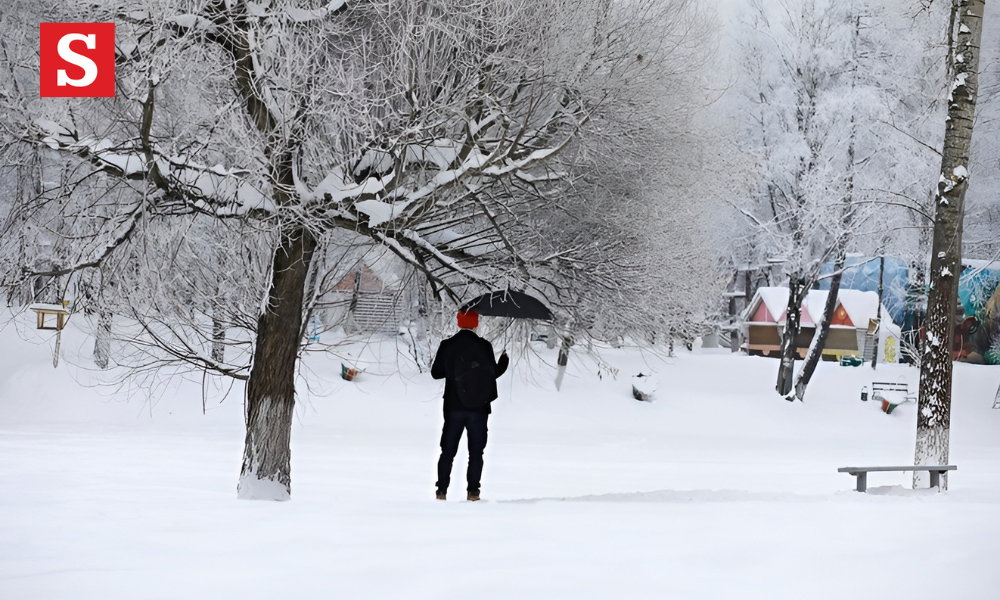Many areas are preparing for the winter storms that are likely to hit them as the winter season approaches. These winter storms can cause snow accumulation as well as severe weather conditions. Therefore, it is essential to understand how the winter storm snow forecast looks like. This article will focus on how the winter storms behave along with the snowfall forecast and possible factors that can affect them.
Overview of Winter Storms
Winter storms are known to encompass several elements like snow, sleet, freezing rain, and ice. The mechanism through which the storm develops is when moist warm air meets cold air at the surface which allows for the creation of snow. In view of the year and the geolocation of the occurrence of these storms, the amplitude of the intensity of the storm can be huge. Considering how many regions were adversely affected by a winter storm this year so late, I expect many more regions to be expected. The precipitation of the air from the Pacific Ocean along with cold air mass would indeed be a key reason for the snow.
Snowfall Predictions for Different Regions
Northeast and Midwest
The Northeast & Midwest should prepare for more snow this winter in relation to a year ago. AccuWeather’s extended outlook indicates that after persistent Arctic blasts, a number of regions within these areas will witness increased snow. With a feeble La Nina present, it is out of the question that the weather will not become colder and rainier. In this respect as well, Minnesota, Wisconsin and Michigan should expect to witness dozens of snow events through the winter. There seems to be a consensus that December will have brief periods of intense cold the kind that can ignite lake effect snows in regions like Buffalo, New York or Erie, Pennsylvania.
Central and Southern U.S.
In contrast with the northern states, which are likely to see heavy snow this winter, the difficulty of snowfall in the central and southern states may be more variable. With the rising effects of la Nina there is likely to be a colder air mass in between onto those areas. This would mean Texas and the Gulf Coast aren’t likely to see a lot of snow either, but they should be on the lookout for those sudden temperature changes that could turn them frosty.
Upcoming Storm Patterns
Meteorologists have pointed out a few notable storm patterns that are likely to develop in this winter. It is observed that the change of weather systems across Europe and North America has already commenced with the influx of the Arctic air mass indicating the occurrence of a harsher winter.
- Arctic Blasts: The influx of the cold air mass from the Arctic into the continental US is likely to cause colder temperatures and increase chances of snowstorms.
- Dynamic Weather Systems: In the Northern Atlantic, a large region of low pressure will begin to form and these areas of low-pressure will advance from Europe to North America, Showers and blizzards are likely to develop as warm and moist spins impart their effects over these systems.
- Impact on Travel: If winter storms become visible with their full potential, the travel may worsen almost instantaneously. When heavy snow falls, it can create dangerous road conditions and more traffic leaving places where it affected while causing delays for flights too.
Preparing for Winter Storms
Dealing with winter storms can be challenging, particularly in their preparation stages. Look at some of the most important pieces of advice you should take:
- Stay informed: It is vital to follow the news concerning storms on a frequent basis as their prediction can change at any given moment. The National weather service informs its clients on expected winter weather conditions.
- Emergency supply items: Keep an emergency kit that has water and food items, medicines, torches, batteries, and blankets in the event that power cuts occur.
- Vehicle Readiness: If you have no choice other than travelling in the midst of winter storms, be sure to have your automobile fitted with winter tires and shove, ice scrapers, blankets, and cooked foods on hand.
- Home Preparedness: Examine and remove the gutters, during, and after big snow, in order to avoid ice accumulations. Weatherize pipes prevent freezing during the most extreme weathers.
Conclusion
This winter season promises to be eventful with numerous winter storms forecasted across various regions. From increased snowfall in the Northeast and Midwest to unpredictable weather patterns in the central U.S., understanding what lies ahead is crucial for safety and preparedness.By staying informed about weather forecasts and preparing adequately for potential winter storms, individuals can navigate this season’s challenges more effectively. As we embrace the beauty of winter’s snowfall, let’s also respect its power by taking necessary precautions against its potential hazards.




